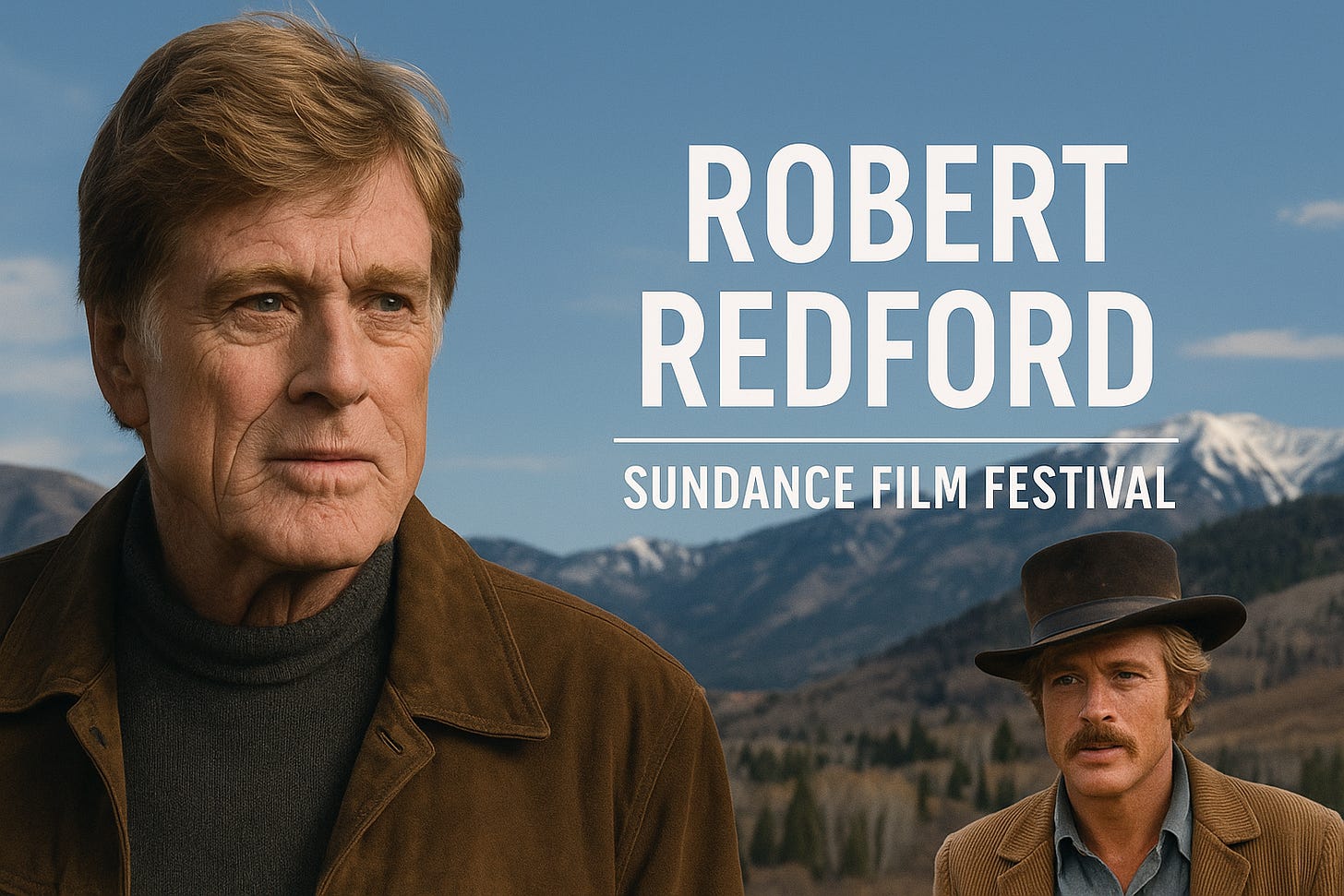Robert Redford, The Sundance Kid Who Rewrote American Cinema, Dies at 89
From outlaw to architect of independent film, Robert Redford turned the Sundance Kid into Sundance itself — a legacy of art, activism, and enduring vision.
He died where he lived most fully: in the shadow of Utah’s Wasatch Range, at Sundance, the retreat he built into an empire of stories. Robert Redford—actor, director, environmentalist, and champion of independent film—passed in his sleep on September 16, 2025, at age 89, surrounded by family in his beloved mountain home (AP News).
Redford was many things—heartthrob, filmmaker, political conscience—but his legend orbits around two words that fused art and identity: Sundance Kid.
Becoming Sundance
The turning point of his career, Butch Cassidy and the Sundance Kid (1969), paired Redford with Paul Newman in a buddy film that reinvented the Western. Redford wasn’t even the studio’s first choice, but his casting changed the trajectory of American cinema (BBC).
The role gave him a name that became more than a character. Sundance became a philosophy, a place, and eventually, a revolution in filmmaking.
Awards and Honors: A Life in Recognition
Redford’s career collected an avalanche of accolades, each marking a chapter of reinvention:
Academy Awards: Best Director for Ordinary People (1980), which also won Best Picture; Honorary Oscar in 2002 for contributions to film and for founding Sundance (Oscars.org).
Golden Globes: Most Promising Newcomer for Inside Daisy Clover (1966), Best Director for Ordinary People (1981), Best Actor in a Drama for The Sting (1974), and the Cecil B. DeMille Award in 1994 (Golden Globes).
Presidential Medal of Freedom: Awarded by President Obama in 2016 for his contributions to culture and the environment (White House Archives).
These honors only sketch the outline of a life spent pushing boundaries.
The Birth of Sundance, the Festival
In the late 1970s, Redford purchased land in Utah and named it Sundance after the outlaw who had made him famous. At first it was a retreat, but in 1981 he founded the Sundance Institute, dedicated to nurturing independent filmmakers. From that seed grew the Sundance Film Festival, now the premier showcase for independent cinema worldwide.
Films like sex, lies, and videotape, Reservoir Dogs, and Little Miss Sunshine owe their first breath of recognition to Sundance. Redford often insisted, “Sundance is not about me. It’s about them—the artists who need a place to breathe” (Reuters).
From Santa Monica to Stardom
Born Charles Robert Redford Jr. on August 18, 1936, in Santa Monica, California, he flirted with baseball at the University of Colorado, studied art in Europe, and eventually turned to acting in New York (Encyclopedia Britannica). Broadway gave him his first taste of success in Barefoot in the Park (1963).
By the 1970s, he was the most bankable star in Hollywood. The Sting (1973), reuniting him with Newman, won seven Oscars. All the President’s Men (1976), where he played journalist Bob Woodward, dramatized the Watergate investigation with stark urgency (New York Times).
His face was everywhere, but he used that capital to step behind the camera. Ordinary People stunned critics with its restraint and emotional honesty, winning him an Oscar for Best Director.
Themes That Defined His Work
Moral weight: All the President’s Men and Lions for Lambs (2007) revealed his belief that cinema could wrestle with truth and democracy.
Nature and place: A River Runs Through It (1992) and The Horse Whisperer (1998) celebrated landscape as character.
Aging and reflection: The Old Man & the Gun (2018) leaned into mortality, portraying men defined by memory as much as action.
Private Man, Public Values
Redford married Lola Van Wagenen in 1958; they had four children, though tragedy struck early when their infant son Scott died. Their son James, a filmmaker and activist, died in 2020 (Variety). Redford later married artist Sibylle Szaggars in 2009.
He was deeply involved in environmental advocacy, supporting groups like the Natural Resources Defense Council and pushing for climate awareness decades before it became mainstream.
Retirement and Reflection
By 2018, Redford announced his retirement after The Old Man & the Gun, saying it felt natural to step back (Rolling Stone). Yet his fingerprints remained on Sundance and environmental projects.
Asked about legacy, he often resisted the question. Yet his institutions, films, and ideals answered it for him.
Death in the Mountains, Legacy in the World
On September 16, 2025, Robert Redford died at his Sundance home in Utah (Reuters). He passed peacefully, “surrounded by loved ones,” according to his publicist (AP News).
His death closes a chapter of American film history. He was not just the face of Hollywood’s golden era but the architect of its independent future.
Why Robert Redford Mattered
He was both Butch Cassidy’s Sundance Kid and the man who turned Sundance into a global movement.
He won Oscars, Golden Globes, and the Presidential Medal of Freedom—yet gave his greatest award to others: opportunity.
He carried contradictions openly: celebrity who distrusted fame, rebel who built institutions, artist who became a statesman.



